The Art of Living with NMO
Six years ago, NMO attacked my optic nerves and left me without functional eyesight for nearly a year. In a matter of moments, my entire world was flipped upside-down. Losing my eyesight impacted every aspect of my life.
Not only was most of my independence taken away from me overnight, but I found that even the most basic of tasks required an enormous amount of support from others.
I could no longer drive, work, take care of my family, cook meals, put on makeup, curl my hair, or perform daily household tasks without someone stepping in to “be my eyes.”
My vision loss triggered the tough emotions
There were many times, especially during the first few months without my eyesight, when I felt completely helpless. I didn’t know what my ultimate prognosis would be, and my head immediately went to the worst-case scenario as each day passed without improvement. I vacillated between despair, anguish, and anger as I tried to cling to the small aspects of my life that were still recognizable.
I didn’t realize it at the time, but the constant vacillation between emotions was my way of grieving the life that I thought I was going to live, while simultaneously grieving the life and challenges that I was being forced to sort out.
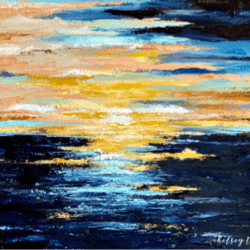
Grieving my ability to see
Compounding the complicated emotions of grief and loss surrounding my vision loss was the heartbreaking knowing that I was actively missing my children growing up right before my eyes. Had I known I would never see their beautiful faces clearly again, I would have taken the time to memorize every speck of color in their beautiful eyes so that it would be impossible for me to forget what they looked like. Had I known the last time would be the last time, I would have soaked up every detail, every freckle, every moment, every memory.
It still hurts my heart to think about the incredible amount of regret and shame I lived with for so long.
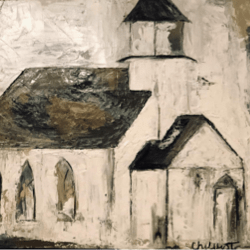
Learning to live a life that looked entirely different
Losing my eyesight created a world around me that looked completely unfamiliar. In many ways, it felt like I had to learn how to live a new life and speak a new language in a very short amount of time. I felt extraordinarily disconnected from my friends and family. I didn’t know how to explain something I had never seen before, and I didn’t know how to ask for what I needed.
Trying to describe what I could see wasn't easy
NMO had not left me completely in the dark, but I struggled to come up with universal examples to help my friends and family understand the amount of vision I was left with.
Some days I would describe it as if a blanket of blur had been draped over my eyes. Other days it felt like I was looking through a foggy, fragmented piece of glass. Colors were muted and lacked the vibrancy I was once able to see. I had daily episodes of bright flashing floaters and lights that streaked across my eyes at random. I saw sparkles in my eyes if the lights turned out too quickly, and I saw sparkles in my eyes when I sneezed, laughed, and coughed.
My experience with optic neuritis encompassed every aspect of my life, and I quickly discovered that there were no amount of words that would ever come close to describing my experience.
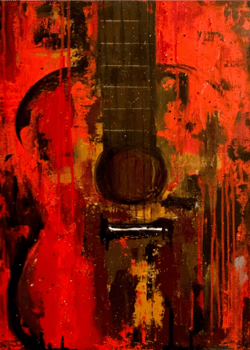
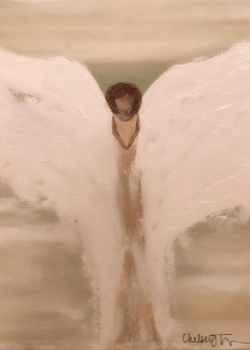
Art found me when I needed it most
Months had passed since I lost my eyesight, and it no longer felt safe for me to remain isolated and alone in my experience. The cycles of complicated grief and shame felt unbearably heavy but not nearly as heavy as the idea of living with this disease alone.
I knew I needed to find an outlet to release the grief I had been dragging around, so I decided to do what any newly visually impaired person would do and I picked up a paintbrush and began painting. Was it the most practical activity to reach for, given my circumstances? Probably not. Had I ever painted a picture before in my life? Nope. Could I see what I was painting or the colors that I was painting with? Not really.
But did I feel alive and free for the first time in months after I finished my first painting? ABSOLUTELY YES!
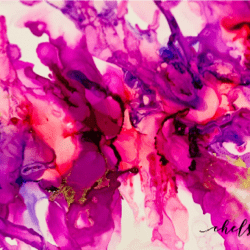
I thought painting would be nothing more than a therapeutic opportunity to express my experience with vision loss, but instead, painting became a lifeline between me and the sighted. Turns out I didn’t need words to describe my vision loss. I just needed to paint an actual picture from my perspective.
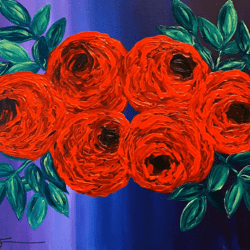
I'm an artist with NMO
My artwork represents my memories, my past, my present, my current capabilities, and endless possibilities. Art has allowed me to experience a kind of freedom I never thought possible. My passion for living creatively has inspired over 500 completed pieces, now located throughout all 50 United States as well as several art galleries, countries, and international companies.
Words for the community, even if you don't struggle with vision loss
NMO takes what it takes, and often we are left to reassemble our lives in a way that does not remotely align with our expectations.
There is nothing I can do or say to make that kind of grief or pain any less for you, but please know you never have to walk this journey alone. I promise that you have an incredibly full and vibrant life ahead of you, even if you can’t see it yet.

Join the conversation